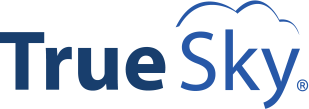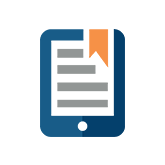Making the Switch from an Annual Budget to Rolling Forecasting

If you’re thinking of moving your business away from an annual budgeting model to a rolling forecasting model, you’re not alone. In fact, a growing number of companies are using rolling forecasting these days, which is why we designed True Sky to work for this method as well as for those who use annual budgeting. At True Sky, we aim to simplify your budgeting process, no matter how you do it!
If you are making the switch from an annual budget to rolling forecasting, however, we can definitely offer some tips to make the transition easier.
First, make the case to your stakeholders.
The first step in letting go of your annual budget is to make sure your stakeholders are on board. You can’t make any changes if your employees and colleagues are resistant.
You may have an easier time convincing people at the top of the organization than those at lower levels. After all, it’s those who are actually responsible for working with the budget day in and day out who have the most to gain or lose by making the switch. It’s up to you to show them that moving to rolling forecasting, will, in fact, mean a net gain in time and energy.
Be aware that some people may initially be skeptical of the rolling forecast simply because they’re used to the traditional budgeting process. Others may have specific concerns about how the process will affect their departments.
While the process of switching from one system to another will take some time and figuring, rolling forecasting will actually save time for everyone who’s involved in the budgeting process.
Assemble your team.
As all good leaders know, it’s rare that the budgeting process can be accomplished without help. When you decided to make the switch from budgeting to forecasting, it’s likely you discussed the idea with colleagues whose opinions you valued. If they’re able, those people should be on your forecasting team.
You’ll need input from each department, so ask your department heads to recommend someone who’ll be responsible for gathering that feedback. Then you’ll want to make sure that everyone knows what rolling forecasting actually means! Once you get outside the finance department, it’s highly likely that most people won’t know how a forecasting model differs from a budgeting model – why would they? Make sure you or one of your other team members are ready and able to explain the differences.
Decide on the business drivers that need to be evaluated and emphasized.
The key to the forecasting process is identifying a company’s business drivers, and deciding how often they need to be re-evaluated. For a retail business, for example, one business driver would be sales per square foot. This might need to be evaluated on a weekly or monthly basis, depending on the business.
Other business drivers might only need to be evaluated every other month, or quarterly. How often you evaluate doesn’t really matter – what matters is that you have fresh data to feed into your forecasting document on a regular basis. And speaking of fresh data…
Make sure you have a process for maintaining current data.
One of the biggest differences between a budget and a forecast is that budgets are generally based on historical data. Forecasts, on the other hand, are by definition ongoing – that means that you need to be able to put actual, current numbers into your forecasting system in order for it to be a living document and not just a short-term version of a budget.
Getting to this point may require putting in place some new processes, or even starting to track different pieces and types of data throughout a department or the entire organization. Give yourself, your colleagues, and your employees time to figure out the best approach, and don’t expect to wean yourself off your annual budget overnight.
When you do have your data processes in place, you want to make sure that you can access that data easily and in real time. True Sky allows for that and more.
Finally, make sure you use forecasting software that will make your transition as easy as possible.
Software can either complicate things or simplify them. When it comes to moving to a new process like forecasting, you want to make sure that your software does the latter. True Sky, which uses the Excel interface, is designed to make your forecasting or budgeting as simple, clear, and helpful to your organization as possible. To find out more about using True Sky, you can check out our video library, or contact us!



